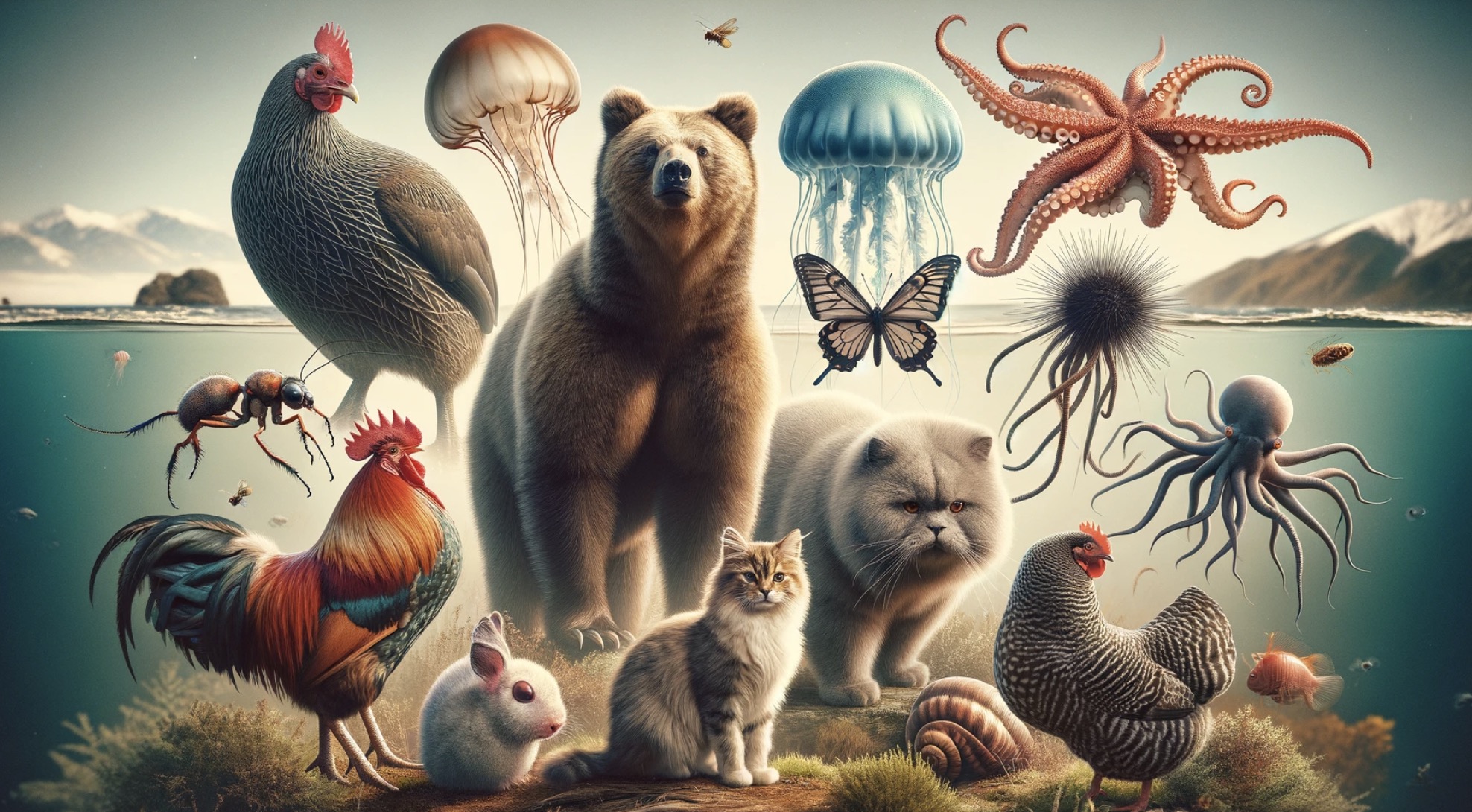Many animals have unique adaptations that allow them to thrive in their environments. One such adaptation is the tail, which serves many purposes, including balance, communication, and defense.
However, there are also animals that have evolved to live without tails. In this article, we will explore 15 animals that don’t have tails and the reasons behind their evolutionary adaptations.
The absence of a tail in animals is not always a disadvantage. In some cases, it can be an advantage, allowing animals to move more efficiently, or to live in environments where a tail would be a hindrance.
For example, aquatic animals such as whales and dolphins have evolved to live without tails, instead relying on their flippers and streamlined bodies to swim through the water. Similarly, some birds, such as ostriches, have evolved to run on two legs, and a tail would only get in the way.
Contents
List of 50 Animals That Don’t Have Tails:
Many animals have evolved to live without tails, allowing them to thrive in their unique environments.
Here’s a list of 50 animals that typically don’t have tails, along with a brief description of each:
- Frog – Amphibians known for their jumping abilities, croaking sounds, smooth skin, and lack of tail.
- Toad – Similar to frogs, but with drier, bumpy skin and a more terrestrial lifestyle.
- Starfish – Marine invertebrates with typically five arms, known for their ability to regenerate limbs.
- Sea Urchin – Spiny, globular marine animals living on the seabed.
- Octopus – Soft-bodied, eight-armed molluscs known for their intelligence and camouflage abilities.
- Squid – Fast-swimming cephalopods with a distinct head, bilateral symmetry, and tentacles.
- Cuttlefish – Cephalopods similar to squids, with a unique internal shell called the cuttlebone.
- Jellyfish – Gelatinous, tentacled marine animals that drift through the ocean.
- Snail – Slow-moving molluscs with a coiled shell.
- Slug – Similar to snails, but without a shell, known for their slimy bodies.
- Horseshoe Crab – Marine arthropods with a hard carapace and long, pointed tail-spine.
- Crab – Ten-legged crustaceans known for their sideways walk and pincers.
- Lobster – Large marine crustaceans with long bodies, muscular tails, and live in crevices or burrows on the sea floor.
- Barnacle – Hard-shelled sea creatures that attach themselves permanently to a hard substrate.
- Clam – Marine bivalve molluscs with shells divided into two equal sections.
- Oyster – Marine molluscs known for their ability to produce pearls.
- Mussel – Bivalve molluscs living in both freshwater and saltwater environments.
- Sea Anemone – Predatory marine animals resembling flowers, often found attached to rocks.
- Coral – Marine invertebrates forming large colonies of identical individual polyps.
- Sponge – Simple aquatic animals with porous bodies, lacking true tissues and organs.
- Sea Cucumber – Echinoderms with elongated bodies and leathery skin.
- Manatee – Large, aquatic mammals with a paddle-shaped tail and flippers.
- Sea Slug – Colorful, soft-bodied marine gastropod molluscs.
- Nudibranch – A type of sea slug known for its extraordinary colors and forms.
- Sea Sponge – Simple marine animals that filter feed on particles in the water.
- Turtle – Reptiles with a shell made up of a carapace and plastron, lacking a visible tail.
- Tortoise – Similar to turtles, but primarily land-dwelling and with a more dome-shaped shell.
- Sea Lion – Marine mammals known for their loud barks and agility in water.
- Walrus – Large marine mammals with distinctive tusks, whiskers, and bulk.
- Elephant Seal – Large, ocean-going seal with a distinctive snout and size.
- Hippopotamus – Large, mostly herbivorous mammals living in rivers and lakes.
- Rhinoceros – Large, heavy mammals known for their horned snouts.
- Human – Highly intelligent primates known for their advanced language, culture, and technology.
- Kangaroo – Large marsupials known for their powerful hind legs and hopping movement.
- Koala – Tree-dwelling marsupial native to Australia, known for its diet of eucalyptus leaves.
- Wombat – Short-legged, muscular marsupials native to Australia.
- Guinea Pig – Small, tailless rodents popular as pets.
- Hamster – Small rodents known for their cheek pouches and nocturnal habits.
- Gerbil – Small, desert rodents with a tail that is almost invisible.
- Chinchilla – Small, fluffy rodents known for their soft fur.
- Rabbit – Small mammals with long ears, large hind legs, and a very short tail.
- Hare – Similar to rabbits, but larger and with longer hind legs.
- Pika – Small, mountain-dwelling mammals related to rabbits and hares.
- Hedgehog – Small mammals with a coat of sharp spines for protection.
- Porcupine – Rodents with a coat of sharp spines or quills for defense.
- Mole – Small, burrowing mammals with velvety fur and no visible tail.
- Vole – Small rodents resembling mice, with shorter tails and stouter bodies.
- Shrew – Small mole-like mammals with pointed noses and tiny eyes.
- Tapir – Large browsing mammals, similar in shape to a pig, with a short, prehensile snout.
- Aardvark – Medium-sized, burrowing, nocturnal mammals with a pig-like snout.
Evolutionary Significance of Taillessness
The presence or absence of a tail is a defining characteristic of many animal species. While most animals have tails, there are some that do not. The evolution of taillessness in animals is a fascinating subject that has been studied extensively by biologists and evolutionary scientists.
One of the most common explanations for taillessness in animals is genetic mutation. Genetic mutations can occur spontaneously, and when they do, they can result in the loss of certain physical characteristics, such as a tail.
In some cases, this mutation can be passed down from generation to generation, resulting in an entire species of tailless animals.
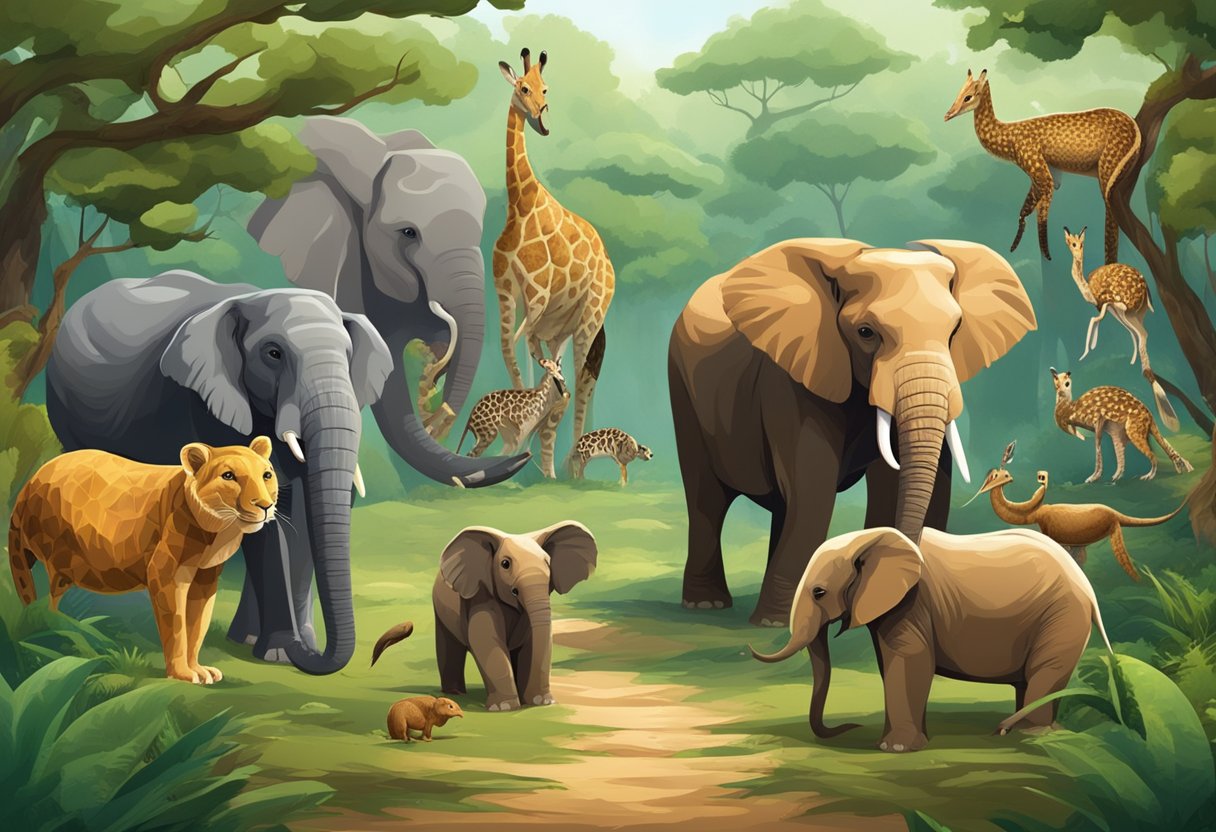
Another explanation for taillessness in animals is the environmental pressures that a species may face. For example, if a species lives in an environment where a tail is not necessary for survival, then over time, that species may evolve to lose its tail. This is known as natural selection, and it is a fundamental principle of evolutionary biology.
Some animals that do not have tails include snakes, worms, and some species of lizards. In the case of snakes and worms, their lack of a tail is due to the fact that they have a long, streamlined body that allows them to move quickly and efficiently through their environment. For lizards, the loss of a tail may be due to the fact that they have evolved other means of defense, such as camouflage or the ability to run quickly.
In conclusion, the evolution of taillessness in animals is a complex and fascinating subject that has been studied extensively by biologists and evolutionary scientists. While genetic mutation and environmental pressures are two common explanations for the loss of a tail, there are many other factors that may contribute to this phenomenon.
Regardless of the cause, the fact remains that there are many animals that do not have tails, and each of these species has its own unique story to tell.
Anatomical Adaptations in Tailless Animals
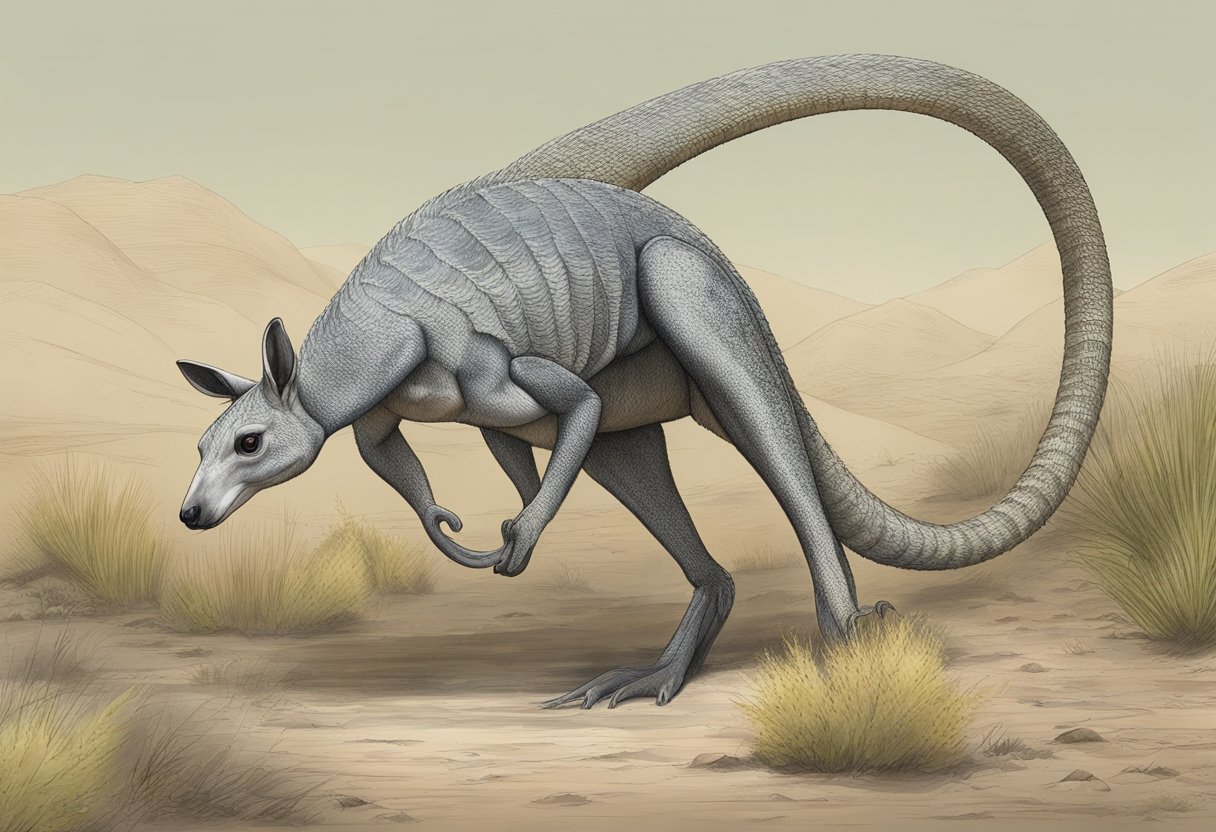
Tails are a common feature in many animals, but there are some species that have evolved without them. These tailless animals have adapted to their environment in various ways to compensate for the loss of this appendage. In this section, we will explore the anatomical adaptations in tailless animals and how they have evolved to meet their needs.
Balance
Tails are important for balance in many animals. However, tailless animals have developed other ways to maintain their balance. For example, kangaroos have powerful hind legs that allow them to hop and maintain their balance. Similarly, birds have wings that help them balance in the air.
Communication
Tails are often used for communication in animals, such as dogs wagging their tails to show happiness or cats using their tails to signal aggression. Tailless animals have developed other ways to communicate. For example, primates use facial expressions and body language to communicate with each other.
Defense
Tails can be used for defense in animals, such as lizards that can detach their tails to distract predators. Tailless animals have developed other ways to defend themselves. For example, armadillos have a hard shell that protects them from predators.
Functions
Tails serve various functions in animals, such as aiding in movement, swimming, and grasping. Tailless animals have adapted to perform these functions without a tail. For example, dolphins use their flippers to swim and grasp objects.
Physiology
Tails can also serve physiological functions in animals, such as storing fat or providing balance during mating. Tailless animals have adapted to compensate for the loss of these functions. For example, elephants use their trunks to grasp objects and communicate with each other.
Overall, tailless animals have developed various anatomical adaptations to compensate for the loss of their tails. These adaptations have allowed them to thrive in their environment and perform the functions necessary for survival.
Mammals Without Tails
Mammals are known for their tails, which serve various purposes such as balance, communication, and defense. However, there are some mammals that don’t have tails at all. In this section, we’ll discuss three examples of mammals without tails: Great Apes, American Black Bear, and Guinea Pigs.
Great Apes
Great Apes are a group of primates that include gorillas, chimpanzees, and bonobos. They are known for their intelligence, dexterity, and lack of tails. Great Apes use their arms and legs for balance and movement, and their tails have evolved into a coccyx, a bone that provides support for the pelvic region.
American Black Bear
The American Black Bear is a large mammal native to North America. Despite being a member of the bear family, it does not have a tail. The reason for this is unclear, but it is believed that their short and stocky body shape, coupled with their powerful hind legs, allows them to move efficiently without the need for a tail.
Guinea Pigs
Guinea Pigs are small, domesticated rodents that are popular as pets. They are known for their cute appearance and gentle nature. Guinea Pigs do not have tails, but they do have a small bone called the sacrum, which provides support for their hind legs.
In conclusion, while most mammals have tails, there are some that have evolved to live without them. Great Apes, American Black Bear, and Guinea Pigs are just a few examples of mammals that have adapted to thrive without tails.
Birds That Lack Tails
Some birds are known for their long, beautiful tails, which they use for balance, display, and as a rudder during flight. However, there are some birds that have evolved to live without tails.
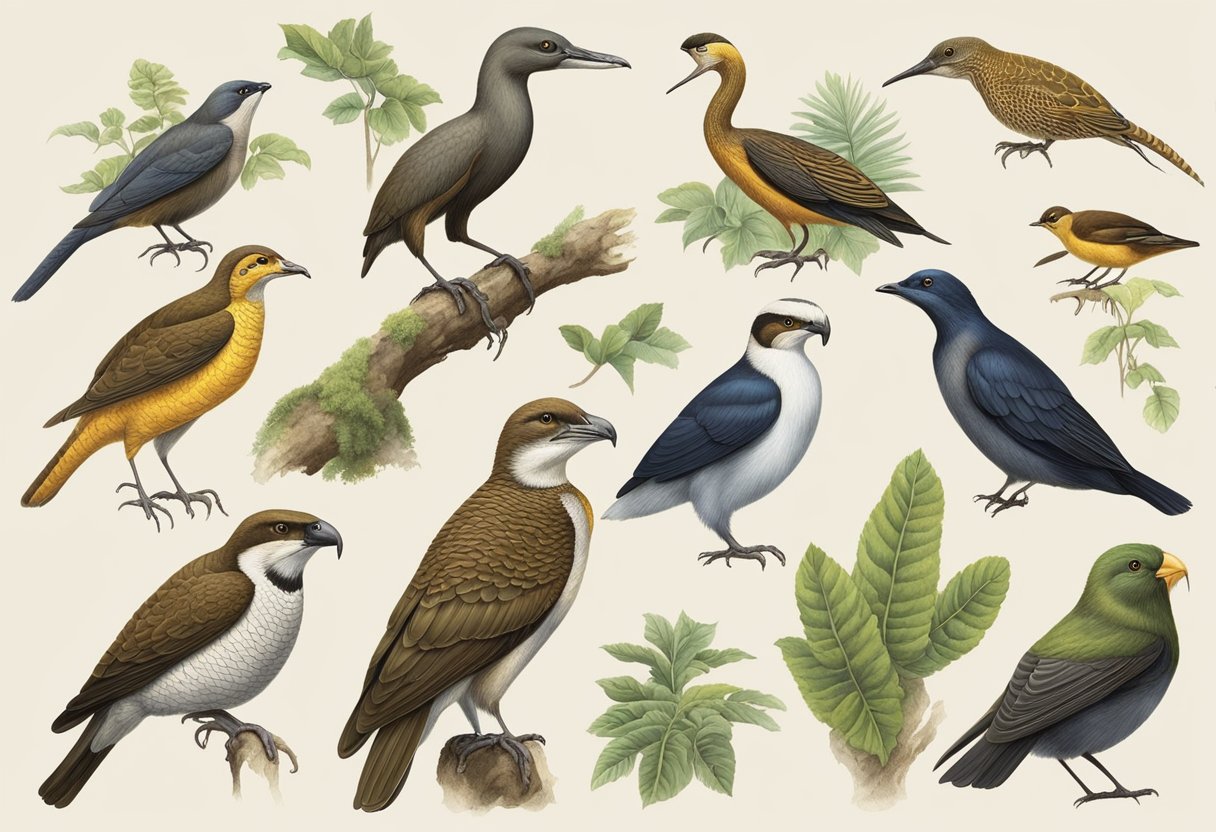
In this section, we will take a closer look at two such birds: the kiwi bird and Araucana chickens.
Kiwi Bird
The kiwi bird is a flightless bird native to New Zealand. It is a small, stocky bird that is about the size of a domestic chicken. Unlike most birds, the kiwi bird has no tail. This is because the kiwi bird has evolved to live on the ground, and does not need a tail for balance or flight. Instead, the kiwi bird has strong legs and feet that allow it to run and dig for food.
Araucana Chickens
Araucana chickens are a breed of domestic chicken that are known for their blue eggs. They are also unique in that they lack a tail. This is because the Araucana chicken is a result of a genetic mutation that causes the tail to be shortened or absent. Despite this, Araucana chickens are still able to fly short distances and are considered good foragers.
In conclusion, while most birds have tails, there are some that have evolved to live without them. The kiwi bird and Araucana chickens are two such examples. These birds have adapted to their environments and have found ways to thrive without the need for a tail.
Reptiles and Amphibians with Reduced Tails
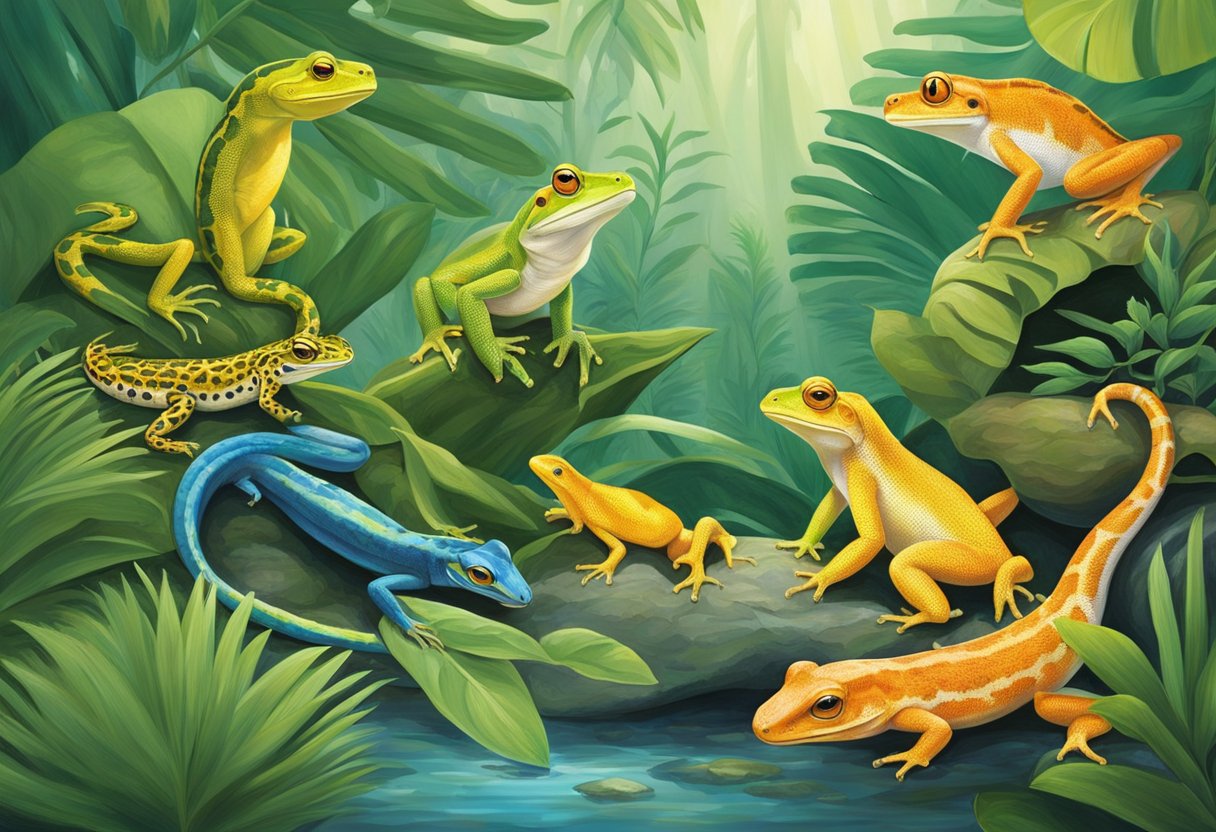
Some reptiles and amphibians have evolved to have reduced or absent tails. While tails are typically used for balance, defense, and communication, these animals have adapted to live without them. Here are some examples of reptiles and amphibians with reduced tails:
Frogs
Frogs are known for their long, powerful hind legs used for jumping and swimming. However, not all frogs have tails. The family Pipidae, which includes the African clawed frog and the Surinam toad, are tailless. These frogs have a flattened body shape and rely on their powerful legs to move through the water.
Toads
Toads, like frogs, are amphibians that belong to the order Anura. While most toads have short tails, some species have evolved to have no tail at all. For example, the harlequin toad, also known as the clown frog, has a short, stubby tail that is barely visible. This toad is known for its bright colors and unique patterns.
Other tailless toads include the genus Atelopus, which are found in Central and South America. These toads have a distinctive appearance with bright colors and patterns. However, many species in this genus are endangered due to habitat loss and disease.
Overall, while tails are an important adaptation for many animals, some reptiles and amphibians have evolved to live without them. These animals have adapted to use other means of movement and defense, and continue to thrive in their environments.
Tailless Invertebrates
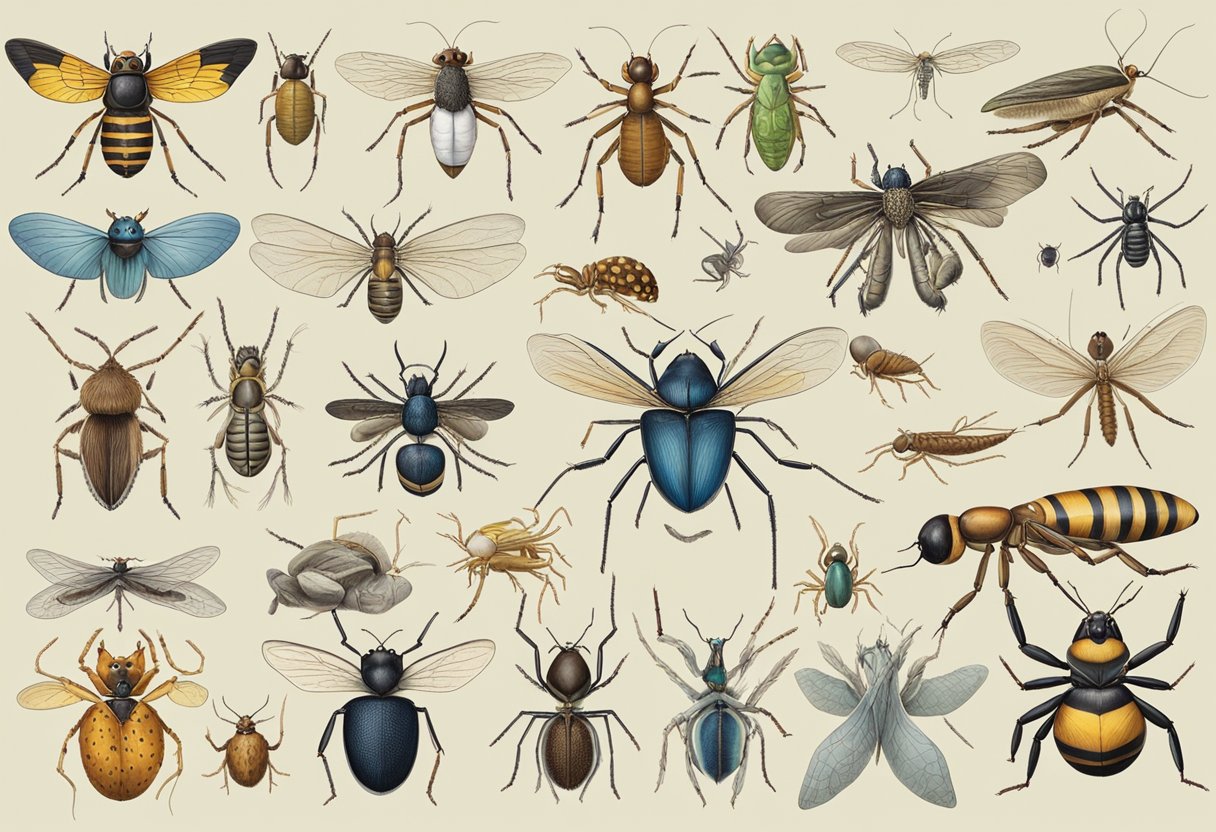
There are many animals without tails, and among them are invertebrates. In this section, we will discuss two examples of tailless invertebrates: spiders and octopuses.
Spiders
Spiders are arthropods that belong to the class Arachnida. They are known for their eight legs and their ability to produce silk. However, they do not have tails. Spiders use their silk to build webs, which they use to catch prey. Some spiders also use their silk to create shelters or to wrap their prey.
There are over 45,000 known species of spiders, and they can be found all over the world. Some of the most common species include the black widow, the brown recluse, and the tarantula. Spiders are important predators in many ecosystems, and they help to control the populations of insects and other arthropods.
Octopus
Octopuses are cephalopods that belong to the order Octopoda. They are known for their eight arms, which are covered in suction cups. Octopuses are also known for their intelligence, and they are capable of solving complex problems. However, they do not have tails.
Octopuses are found in every ocean in the world, and there are over 300 known species. They are important predators in many marine ecosystems, and they feed on a variety of prey, including fish, crabs, and other mollusks.
In conclusion, while many animals have tails, there are also many animals without tails, including invertebrates such as spiders and octopuses. These animals have evolved to survive and thrive without the use of tails, and they are important members of their respective ecosystems.
Aquatic Animals and the Absence of Tails
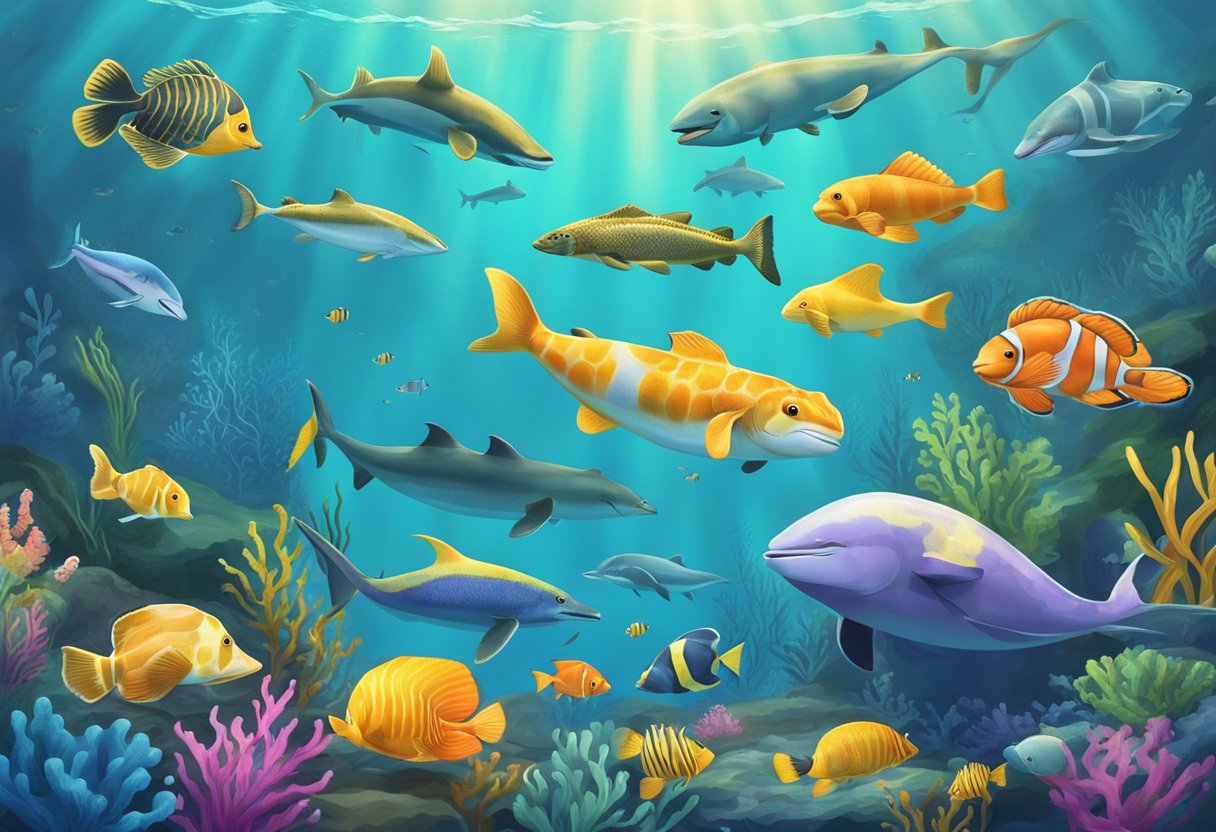
While many aquatic animals rely on their tails for propulsion, there are some that have evolved to thrive without them. These animals have adapted unique methods of movement and survival that do not require a tail. Here are some examples of aquatic animals that do not have tails:
Jellyfish
Jellyfish are one of the most well-known aquatic animals that do not have tails. Instead of a tail, they have a bell-shaped body that they use to propel themselves through the water. They do this by contracting and relaxing their muscles, creating a pulsing motion that propels them forward. Jellyfish are also able to adjust their buoyancy, allowing them to move up and down in the water column.
Octopus
Octopuses are another example of aquatic animals that do not have tails. Instead, they have eight arms that they use to move through the water. They are able to control the direction of their movement by changing the direction of their arms. Octopuses are also able to change the color and texture of their skin to blend in with their surroundings, making them excellent at hiding from predators.
Sea Urchin
Sea urchins are a type of echinoderm that do not have tails. Instead, they have a spherical body with spines that they use for movement and protection. Sea urchins are able to move by using their spines to push themselves along the ocean floor. They are also able to use their spines for defense, as they are covered in venom.
Some Fish
While most fish have tails, there are some species that have evolved to live without them. For example, the eel-like fish known as the lamprey does not have a tail. Instead, it uses its body to move through the water. Lampreys are also able to attach themselves to other fish and suck their blood, making them a unique and interesting species.
Overall, these aquatic animals have evolved to thrive without tails, using unique methods of movement and survival. While tails are an important part of many aquatic animals’ anatomy, these species have shown that they are not necessary for survival in the water.
Unique Cases of Taillessness
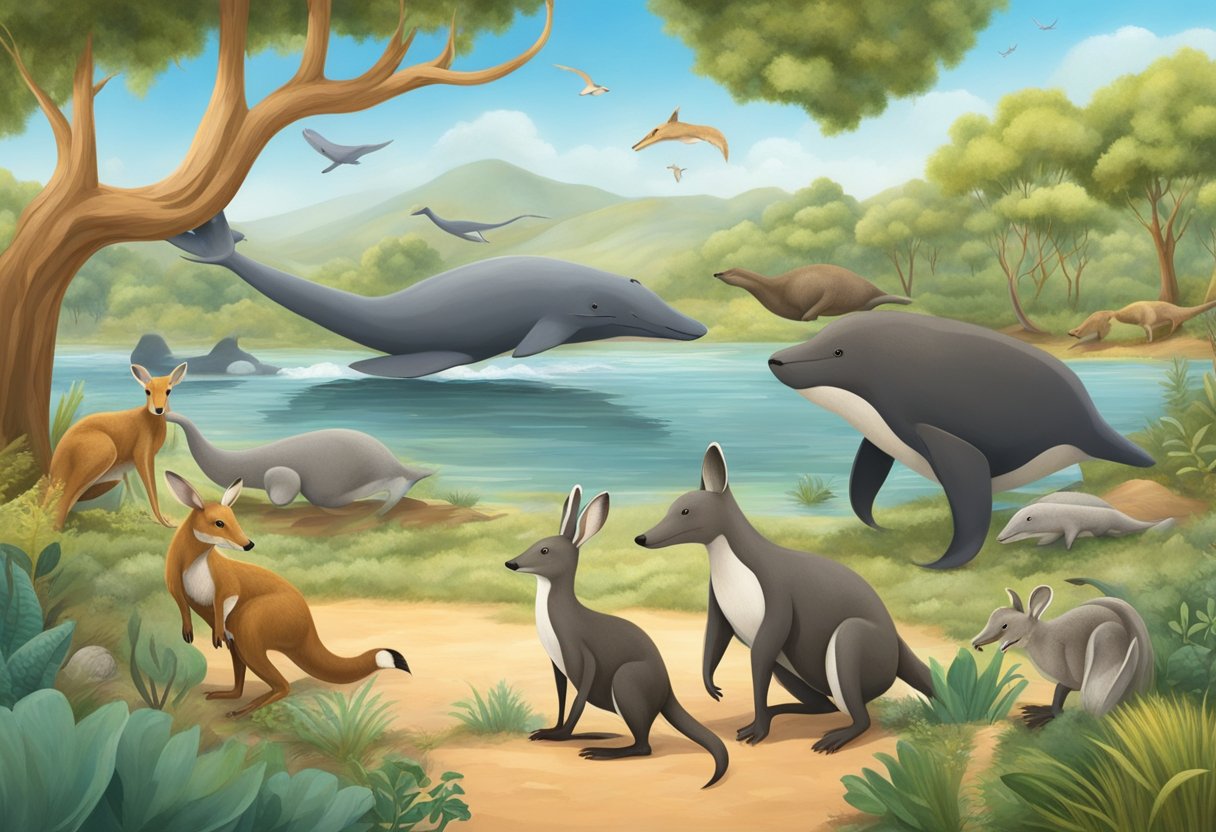
Taillessness is a rare occurrence in the animal kingdom, but there are a few unique cases where animals are born without tails due to genetic mutations. Here are two examples of animals that lack tails:
Manx Cat
The Manx cat is a breed of domestic cat that is known for its lack of tail. This breed originated on the Isle of Man, where the mutation that causes taillessness is thought to have occurred naturally. The Manx cat has a rounded, compact body and can come in a variety of colors and patterns. Despite their lack of tail, they are agile and active cats that make great pets.
Notail Sheep
Notail Sheep, also known as Poll Sheep, are a breed of sheep that are born without tails. This breed is found in various regions of the world, including Australia, New Zealand, and the United Kingdom. The lack of tail is due to a genetic mutation that has been selectively bred for in some regions. Notail Sheep are known for their hardiness and adaptability, making them popular among farmers and ranchers.
In conclusion, taillessness is a rare but fascinating occurrence in the animal kingdom. Whether it is due to a genetic mutation or selective breeding, animals without tails can still thrive and adapt to their environment.
The Role of Tails in Balance and Navigation
Tails are a common feature among many animal species, serving a variety of purposes including communication, defense, and locomotion. However, not all animals have tails. Some species have evolved to thrive without them, relying on other adaptations to maintain balance and navigate their environments.
Balance is a critical aspect of locomotion, and tails are often used to help animals maintain stability while moving. For example, monkeys with long, prehensile tails use them to balance while climbing and navigating through trees. Similarly, kangaroos use their tails as a counterbalance while hopping, allowing them to move quickly and efficiently.
Navigation is another important aspect of animal locomotion, and tails can play a role in helping animals find their way. For example, some fish use their tails to help them swim in a straight line, while others use them to maneuver through complex underwater environments. Similarly, birds with long, streamlined tails use them to steer and stabilize themselves in flight.
However, not all animals need tails to maintain balance and navigate their environments. For example, snakes use their bodies to move and can maintain balance without a tail. Similarly, many species of lizards have evolved to run on their hind legs, using their tails for balance only when necessary.
Overall, while tails can be a useful adaptation for maintaining balance and navigating through complex environments, they are not essential for all animal species. Many animals have evolved to thrive without tails, relying on other adaptations to survive and thrive in their respective habitats.
Taillessness and Social Behaviors
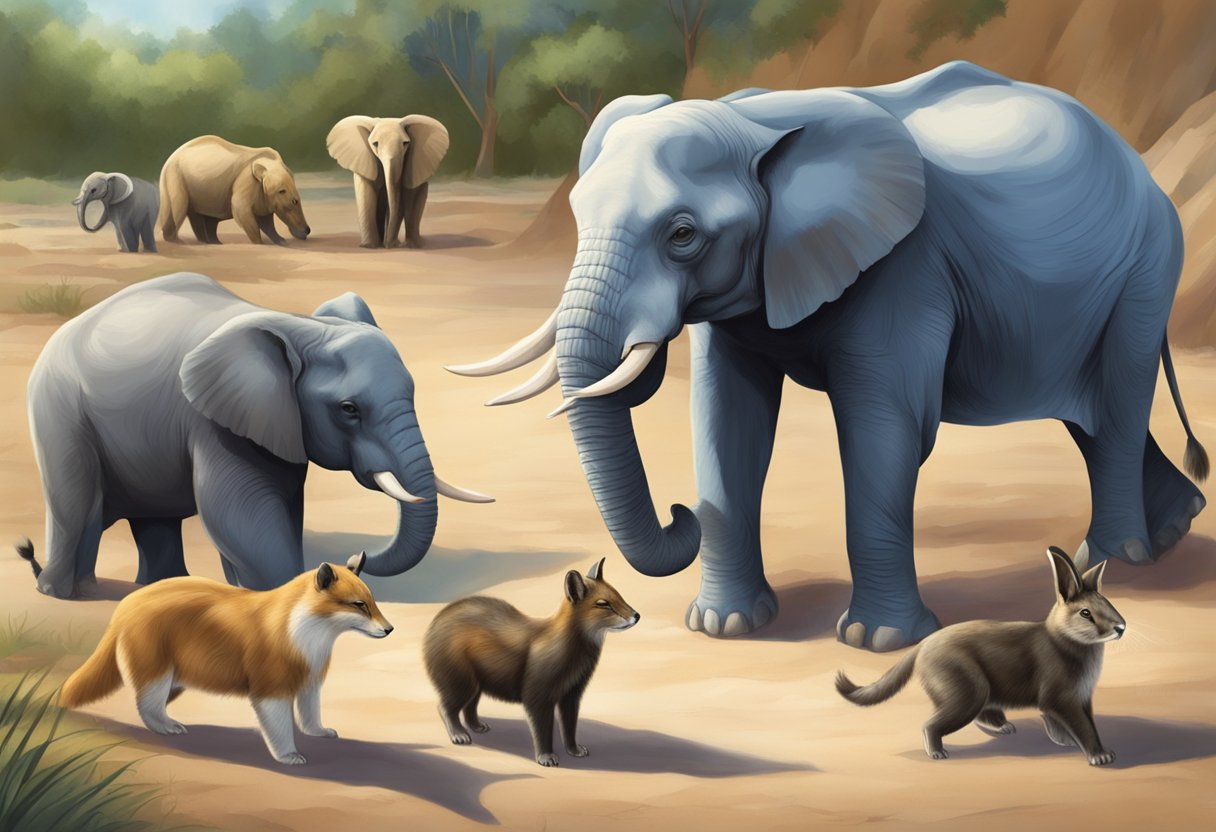
The absence of a tail in animals can have significant effects on their social behaviors and communication. For example, apes such as bonobos, chimpanzees, and Barbary macaques use their tails for communication and balance during locomotion [1]. Tailless animals, therefore, may need to rely on other means of communication and balance.
In some species, tail loss can affect social status and mating success. In the Iberian rock-lizard, Lacerta monticola, tailless females are courted less and have reduced mating success compared to tailed females [2]. Similarly, in Cordylus melanotus melanotus, a species of ambush foraging lizard, tailless individuals had lower aggression levels and were less likely to defend their territory [3].
However, tail loss can also have benefits in certain situations. For example, tail autotomy, or the ability to voluntarily shed their tails, is a common defense mechanism in many lizard species. When a predator grabs the lizard by the tail, the lizard can shed its tail to escape and then regrow a new one later [2].
In conclusion, the absence of a tail in animals can have significant effects on their social behaviors and communication. While tailless animals may need to rely on other means of communication and balance, tail autotomy can also provide a means of defense against predators.
[1] https://www.ncbi.nlm.nih.gov/pmc/articles/PMC2674085/ [2] https://link.springer.com/article/10.1007/BF00173776 [3] https://journals.co.za/doi/abs/10.10520/EJC17863

